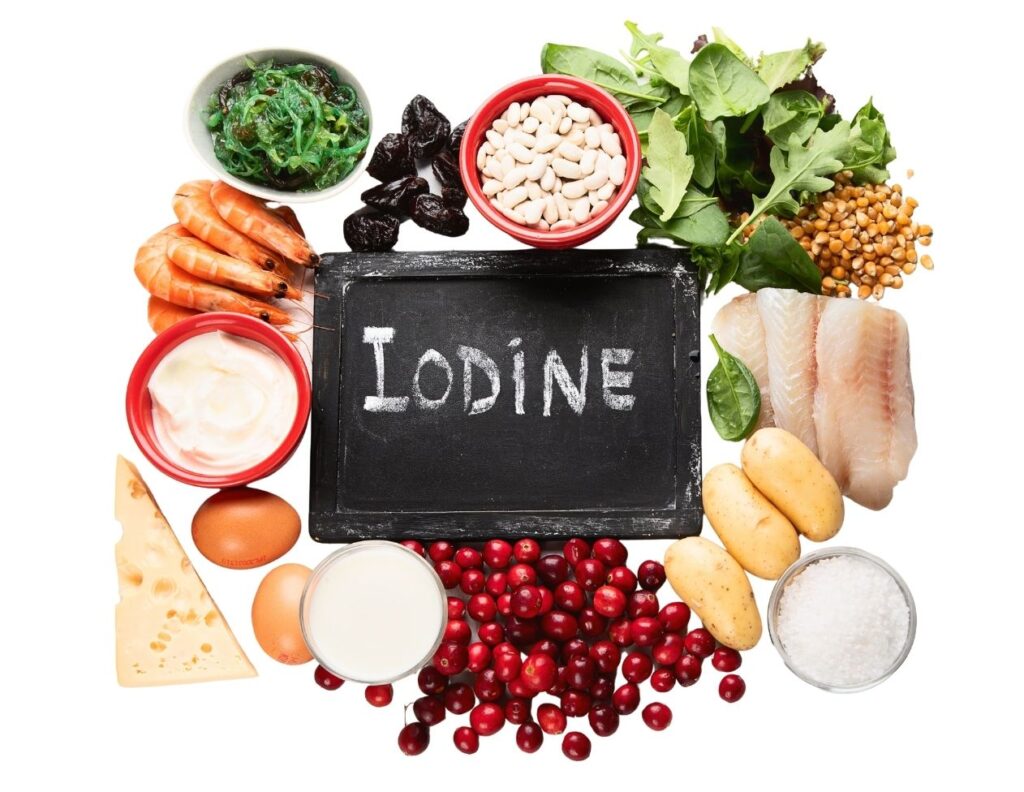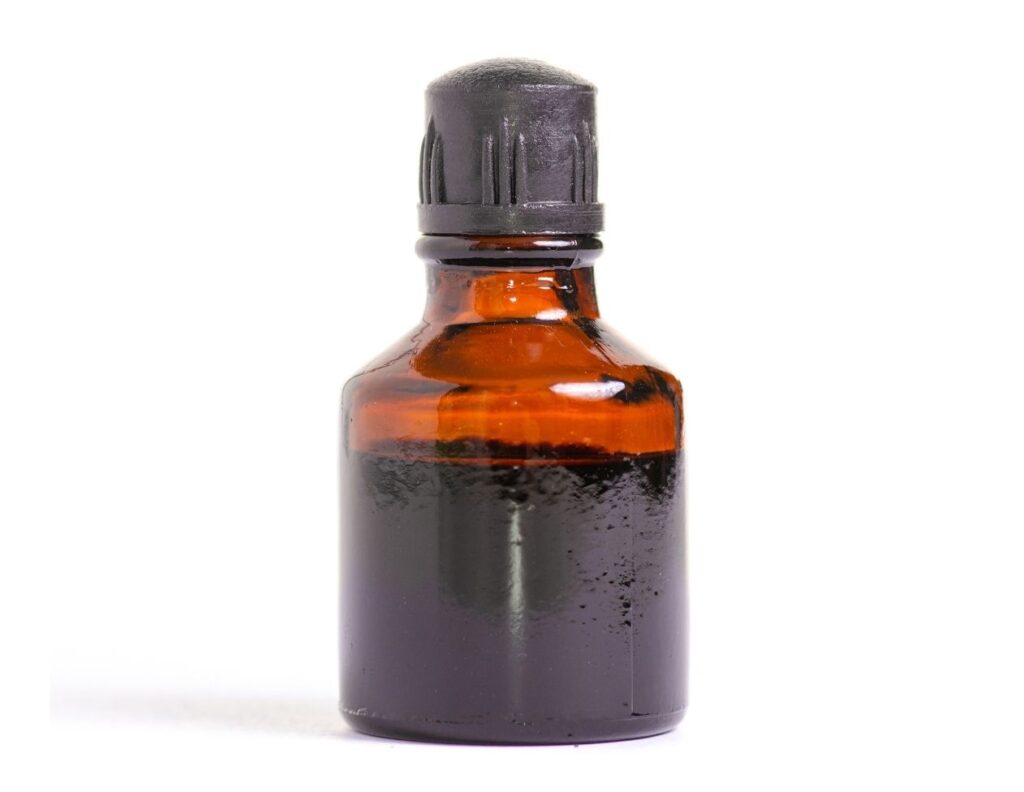Want to know which are the highest natural sources of iodine in foods and how to supplement with iodine naturally? Continue reading this article and find out the best natural sources of iodine. But first.
Iodine is an indispensable component of thyroid hormones, which participate in the most important functions of the body. Iodine deficiency causes energy deficiencies that lead to illness. In pregnant women, iodine deficiency increases the risk of miscarriage or birth defects. In adults, iodine deficiency can severely impact mental faculties, and in children, iodine deficiency negatively impacts the formation of the nervous system and bones, among others. Before we get to the highest natural sources of iodine, let’s see what are the most common iodine deficiency symptoms and uses.

In This Article You Will Find:
Iodine Deficiency Symptoms
The most common iodine deficiency symptoms are the following:
- thyroid disorders
- infertility
- decreased mental and physical capacity
- drowsiness
- violent behavior
- persistent constipation
- predisposition to viral infections
- heart disease
- hair thinning
- hair loss
- brittle nails
- low or lack of lactation
- difficulty to lose weight
- premature aging, weight gain, and edema around the eyes and feet (during menopause)
People with iodine deficiency are prone to chronic diseases, atherosclerosis, hypertension, headaches, and high cholesterol. Luckily, like most trace elements, iodine gets into the body along with the food that we eat. Hence, here are the highest natural sources of iodine in food.
Iodine Uses
Iodine is a natural immune booster, especially against colds and catarrh, but to protect from radiation. Externally, iodine can be used to alleviate back pain, mycosis, and bruises.
- Sore throat – Prepare a gargle solution with 250 ml of warm water, 1-2 drops of iodine, and a teaspoon of salt. Gargle 6-8 times a day.
- Cattarh – Remove the stopper of an iodine bottle and inhale the odor for 30 seconds, first through only one of the nostrils, then through the other. Hold it in for a few seconds, then exhale through the mouth.
- Severe cough, pleuritis – Draw a net of horizontal and vertical lines with a cotton swab soaked in iodine on the affected areas.
- Back pain – Mix one tablespoon of iodine and one tablespoon of lemon juice. Using a cotton pad, anoint the spine from top to bottom on a 4 cm (1.5 inch) wide area, before bed.
- Mycosis – Iodine also helps in the fight against fungal diseases (eczema and trichophytic). Anoint the affected areas, skin, or nails with iodine.
- Bruises – Due to its anti-inflammatory effect, iodine helps bruises disappear faster. To prevent the burning of the skin, do not apply iodine over the whole bruise, but only draw a few horizontal and vertical lines over the area.
- Corns. For 3 days, morning and evening, anoint the corns and a small area around it with iodine, then take a warm feet bath for 15 minutes. Add a tablespoon of salt and a tablespoon of baking soda into the bathwater. After the bath, rub the corn lightly with a pumice stone.
Now that you know what are the main iodine deficiency symptoms and iodine uses, let’s get to the highest natural sources of iodine in food, and then we’ll show you the highest natural sources of iodine in herbs.

11 Highest Natural Sources of Iodine in Food
The highest natural sources of iodine in food are found in:
- ocean fish
- red and brown seaweed
- nuts
- raw spinach
- onions
- beets
- carrots
- potatoes
- apples
- grapes
- soy
A small amount of iodine is also found in meat, milk, and eggs. The amount of iodine in food also depends on the time and conditions of storage. For example, stored potatoes lose 64.5% iodine from October to May. Hence, fresh produce has a higher concentration of iodine, so keep this in mind.
4 Highest Natural Sources of Iodine in Herbs
1. Laminaria
Dried seaweed, especially laminaria (Laminaria japonica) also known as kelp is one of the highest natural sources of iodine. For those low in iodine, the recommended laminaria intake is 1/2 tsp of dried laminaria with a little water before bed. A complete cure lasts for 15-30 days, depending on each one’s necessities. You can resume after a break of 2 months. You can also use laminaria algae to prepare a natural iodine solution at home, following this recipe here.
2. Lily of the Valley Infusion
(Convallaria majalis)
Springtime brings us delicate flowers that can be used instead of expensive iodine medicines. We are talking about the lily of the valley flowers. Here is how to use this remedy to boost iodine naturally. Boil 15 g of fresh lily of the valley flowers in 250 ml (1 cup) of boiling water for 2-3 minutes. Take them off the heat and strain the tea. You can have 2 teaspoons, 3 times a day. Do not exceed the dose as the plant can be toxic!

3. Black Chokeberry
(Aronia melanocarpa)
One of the highest natural sources of iodine is black chokeberries. Grind 1 kilogram of the plant and mix it with 700 g of wildflower honey. The dose is one teaspoon, 3 times a day. This is a simple way to boost iodine naturally.
4. Common Cocklebur
(Xanthium strumarium)
Common cocklebur decoction is one of the highest natural sources of iodine. To prepare the decoction, add 1 tablespoon of the finely chopped herb to 250 ml (1 cup) of boiling water, and simmer for 10 minutes. Turn the heat off, and allow the decoction to infuse covered, until it has cooled down. You can drink a tablespoon 5-6 times a day.
How to Tell You Are Iodine Deficient
Now that you know what are the highest natural sources of iodine, here is a simple test to see if you are iodine deficient. This is an ancient method used by Russian doctors to treat thyroid disorders in the early stages, using iodine applications. Before prescribing the exact doses, they would make a simple iodine deficiency test, using the following method.
Before going to bed the patient had to draw 3 strips of iodine with a cotton swab on the outside of the left arm between the elbow and the wrist. The first stripe is drawn once, lightly, to obtain a light color. The second stripe is drawn twice, in the same place, to obtain a more intense color. The third stripe is drawn 3-4 times, in the same place, to obtain a dark stripe. In the end, you would have three iodine stripes, of three intensities.
In the morning, they would check which of the stripes have completely disappeared. If the skin has absorbed all the three iodine streaks without leaving any traces, the iodine deficiency is high. If only the first two stripes have disappeared, then the iodine deficiency is moderate. If only the first stripe has been absorbed, the iodine deficiency is low.
Read Also: How to Make Iodine at Home – 100% Natural
Now you know what are the highest natural sources of iodine in foods and in herbs and herbal preparations. If you’ve enjoyed this article, share it so more people can use this information. Stay healthy, naturally!
Share on Pinterest ❤️

